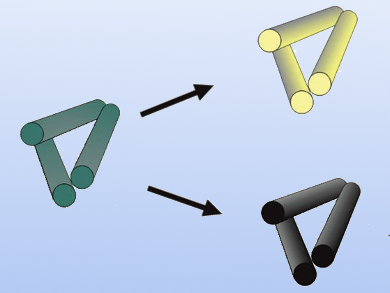Among the transition-metal oxides relevant for catalysis, MoO3 is one of the few oxides that remains mesoscopically unstructured. This results in limited technological significance. Usually, sublimation of MoO3 leads to a quick loss of the mesostructure. The Boudouard equilibrium, i.e., the equilibrium between CO2/C and CO, can be used to convert MO3 to non-volatile MoO2–x to avoid this problem.
Josef Breu, University of Bayreuth, Germany, Thomas Lunkenbein, Fritz Haber Institute of the Max Planck Society, Berlin, Germany, and colleagues have taken advantage of this approach. They prepared high-surface-area, mesostructured MoO3 nanowires via the oxidation of MoC/C nanocomposites in a CO2 atmosphere.
The key to retaining the mesostructure was the avoidance of MoO3 sublimation during thermal template removal. The team bypassed the sublimation of MoO3 by reducing the oxygen partial pressure into the stability regime of MoO2–x. The CO2 atmosphere can act as an oxidation agent to remove the carbon template, but does not oxidize MoO2–x to MoO3, and the formed CO cannot reduce MoO2–x.
Subsequent reoxidation at moderate temperatures can convert the resulting MoO2–x nanowires to MoO3 while retaining the mesostructure. The material can also be chemically converted to MoN nanowires. According to the researchers, the method could be extended to a general route towards mesostructured refractory compounds, i.e., compounds than can withstand high temperatures.
- Template Removal via Boudouard Equilibrium Allows for Synthesis of Mesostructured Molybdenum Compounds,
Martin Schieder, Carina Bojer, Julia vom Stein, Sebastian Koch, Thomas Martin, Holger Schmalz, Josef Breu, Thomas Lunkenbein,
Angew. Chem. Int. Ed. 2017.
DOI: 10.1002/anie.201610786



